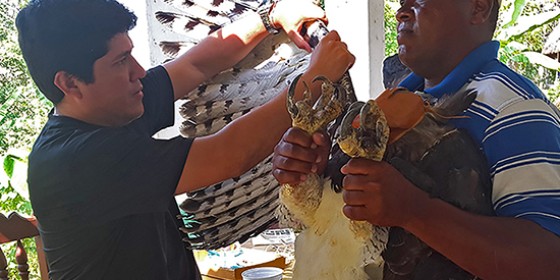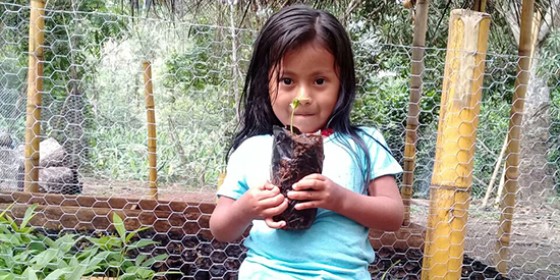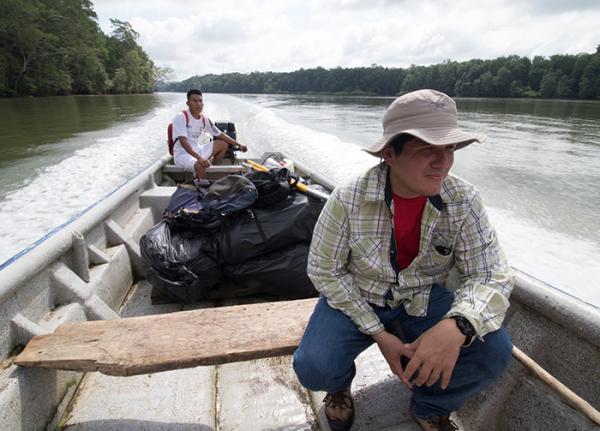Deep in the innermost reaches of Panama, on the border with Colombia, lies the Darien Gap—the largest and wildest remaining stretch of rain forest north of the Amazon. Indigenous peoples have lived traditionally in the area for millennia, and the largest population of Harpy Eagles in Central America nests in the forest’s towering native trees.
Though roughly the size of Connecticut, the Darien region is home to more than 500 bird species—54 of them raptors. With a fifth of its plants found nowhere else and the potential for many more species to be discovered, Darien is one of the most biologically rich places on earth—a biodiversity “hotspot.”
Threats to the Darien Region

Arilio Ismare

Arilio Ismare
We have studied the threatened Harpy Eagle in Darien since 2000, when we also established Panama’s first non-governmental organization for raptor conservation. For many years, we also raised and released Harpy Eagles and conducted public education and outreach in Panama, and our studies on wild populations are ongoing. Our friends throughout the country provide us an intimate understanding of the complex pressures on the Darien and its inhabitants. Now, we are prepared—together—to meet an accelerating threat: land development.
As decades-long conflict in neighboring Colombia comes to a peaceful end, forces are organizing to develop Darien. Colono-campesino land invasions, slash-and-burn agriculture, and uncontrolled cattle ranching are cutting into the forest. At the same time, indigenous Emberá and Wounaan communities are entering the 21st century cash economy, abandoning traditions that have allowed their coexistence in native ecosystems, and adopting unsustainable farming practices.
To meet these challenges, we are creating economic incentives that encourage forest preservation and improve access to education. These initiatives meet human needs and protect the rich biodiversity of Darien. For example, soon we will expand and improve shade-grown coffee plantations to support jobs that don’t harm the rain forest. We already assist with chicken coops and plant nurseries to provide food and discourage the hunting of bush meat.
…we are creating economic incentives that encourage forest preservation and improve access to education.
We pioneered community-based conservation nearly thirty years ago in Madagascar, also a biodiversity hotspot. So far, we have helped 11 communities there organize to manage local resources, expanded the country’s national protected areas by more than a million acres, and supported the education of hundreds of people as conservation leaders. Our experience of “saving raptors, enriching lives” at various scales around the world gives us high expectations for Darien.







